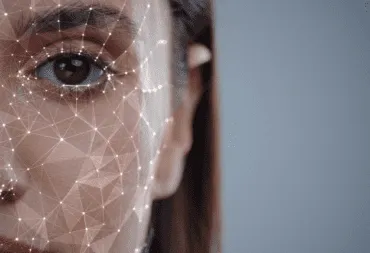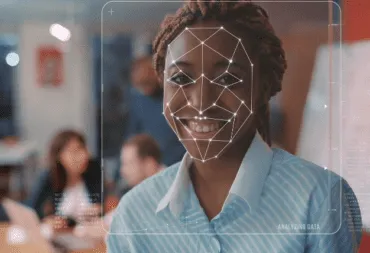The benefits of face recognition technology
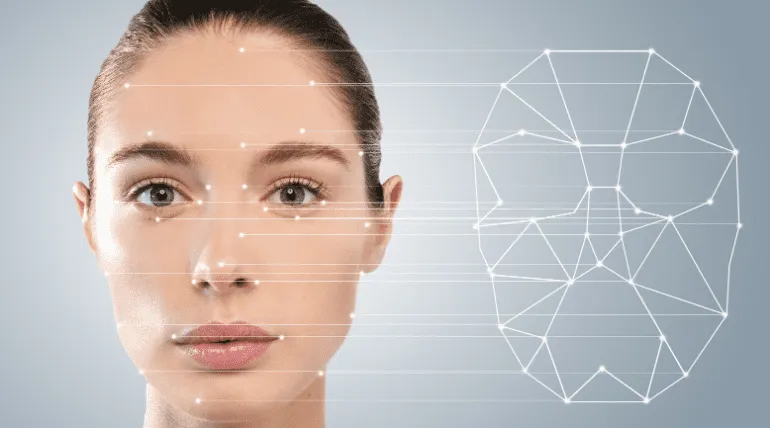
From facilitating international travel to preventing retail theft, face recognition technology is transforming the way we live and work. In this article, we’ll explore the pros and cons of facial recognition in depth, explaining why we think the benefits outweigh its (current) drawbacks.
- A quick introduction to face recognition
- The pros of face recognition
- ➥ Enhanced security and safety
- ➥ Fraud prevention
- ➥ Convenience and efficacy
- ➥ Personalization
- ➥ Improved user experience
- The cons of face recognition
- Conclusion: face recognition has more benefits than drawbacks
- Interested in a face recognition solution?
A quick introduction to face recognition
Facial recognition is a type of AI-powered technology that works by analyzing and identifying our unique facial features.
By identifying a human face in an image or video, face recognition software extracts unique features—like the space between your eyes or the curve of your cheekbones—and compares this data to a stored database for recognition or verification.
The facial recognition market, valued at USD 3.86 billion in 2020, is projected to grow at a CAGR of 15.4% from 2021 to 2028, according to Grand View Research.
Recognized for its speed, accuracy, and reliability, face recognition has found widespread adoption in security, surveillance, and access control, as well as mobile technology, where it’s already widely used for device unlocking, payment verification, sorting photos, etc.
The pros of face recognition
First, let’s look at the pros of face recognition, illustrated by real-life examples.
➥ Enhanced security and safety
Facial recognition technology is already known for high speed, accuracy, and reliability. This makes it ideal for areas where quick and accurate identification is crucial for maintaining a high level of security.
For example, the US Customs and Border Protection (CBP) has committed to using facial recognition technology on 97% of international passengers by 2023. The CGP’s process involves scanning travelers with a camera that matches their live image with existing photo templates from travel documents. Once matched, they can proceed to enter or exit the United States.
Another example is the Dubai International Airport. They use facial recognition cameras for passenger clearance, eliminating the need for passports or boarding passes. It can also be used in retail to identify known shoplifters, like the system used in certain British stores. When someone on the “shoplifter watchlist” enters the premises, artificial intelligence recognizes their face and immediately alerts security officers.
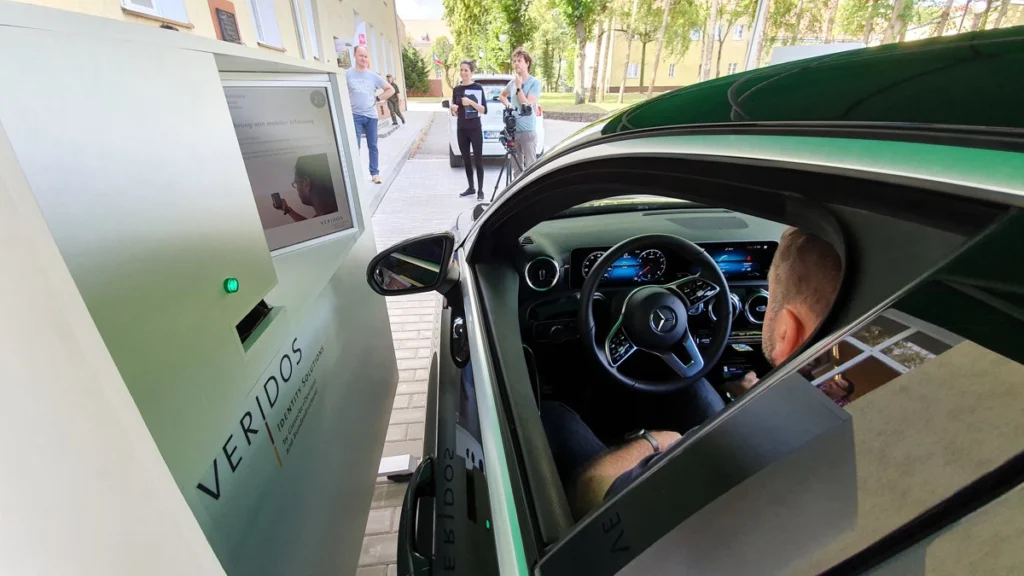
Image: Visage Technologies’ FaceRecognition used for border control. Read the case study here.
➥ Fraud prevention
Face recognition can be used to authenticate customers, reducing the risk of identity theft and fraud. This is especially important in banking and finance.
As an example of a significant development in the sector, HSBC introduced facial recognition banking for its corporate customers in 2018. It allows customers to access mobile banking using a system that analyzes over 30,000 reference points to create a “depth map” of the face. This replaces the need for traditional passwords and passcodes, which can be forgotten or compromised. Also, it speeds up login times to less than a second.
➥ Convenience and efficacy
The iPhone X was the first smartphone to introduce face recognition in 2017, also known as Face ID. From simply unlocking the phone to authorizing other types of actions, it became a very convenient feature for end users, prompting other manufacturers to incorporate it by default.
The fact that face recognition can run offline is also particularly useful for speed and efficiency since it doesn’t rely on an internet connection. For instance, our FaceRecognition has an execution time as short as 26ms. This is why the independent world-renowned NIST evaluation placed it among the fastest and lightest algorithms.
Also, the ability to use face recognition at a distance not only enhances convenience but also promotes hygiene. This offers a distinct advantage over other biometric methods that require physical contact. This becomes particularly crucial during health crises such as epidemics or pandemics. During the COVID-19 pandemic in 2022, the contactless nature of facial recognition technology proved to be a significant asset for reducing the risk of virus transmission while maintaining security and efficiency.
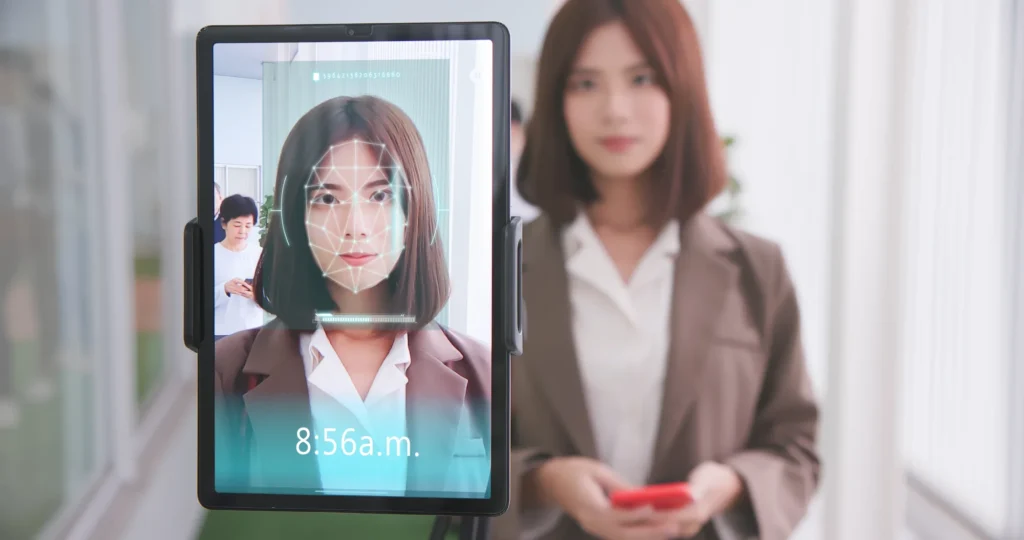
➥ Personalization
Facial recognition technology can also enable personalization in various situations. For example, driver monitoring can be used to automatically adjust car settings to the preferences of a specific driver or passenger, including lighting, heating, seat position, content recommendations, and more.
In hospitality, hotels can use facial recognition to identify returning guests and personalize their experience. According to Oracle’s Hotel 2025 report, 56% of consumers said locking and unlocking rooms using biometrics and facial recognition would enhance their stay.
➥ Improved user experience
By eliminating the need to remember passwords or carry ID cards, face recognition makes everyday tasks more seamless. In customer-facing industries like retail or hospitality, this can lead to higher customer satisfaction and loyalty.
A prime example of this is Mastercard’s new payment system, which allows customers to complete payments with face recognition. This approach not only simplifies the payment process but also adds an extra layer of security, further enhancing the user experience.

The cons of face recognition
While facial recognition technology offers numerous benefits, it’s important to acknowledge and address the potential downsides. Still, there is a solution to each of these challenges, which we’ll explain below.
➥ Privacy concerns
The use of facial recognition technology inherently involves the collection, storage, and analysis of biometric data. This can raise concerns about privacy and data security. If not properly protected, private data could be vulnerable to breaches, potentially leading to misuse of personal information.
However, these concerns can be mitigated with responsible use of the technology, clear policies, and regulations in place to protect individual privacy. This includes obtaining informed consent before collecting biometric data, ensuring its secure storage and handling, and maintaining transparency about how this data is used.
➥ Difficulties in certain conditions
Facial recognition systems can occasionally encounter difficulties with variations in lighting, angles, and facial expressions. For instance, a face that is well-lit during the day may appear very different under dim lighting conditions at night. Also, most facial recognition systems are trained on frontal images of faces, but in real-world scenarios, faces are often turned to the side or tilted up or down.
One possible solution to these challenges is the implementation of multi-modal biometric systems. These systems integrate multiple biometric technologies, ensuring that the limitations of one are compensated by the strengths of others.
In addition, ongoing technology advancements are helping to improve the robustness and accuracy of facial recognition systems in every type of situation.
➥ Bias
Some facial recognition systems have faced criticism for racial and gender bias. This can occur when the algorithms used in facial recognition are trained on datasets that do not adequately represent diverse populations.
However, ongoing advancements in technology and training methodologies are helping to mitigate these issues. By using more diverse training datasets, the algorithms can learn to recognize a wider range of facial features and skin tones, reducing the potential for bias.
➥ Facial spoofing and impersonation
Facial recognition systems, while sophisticated, are not completely foolproof. There is a risk that they could be deceived by photos, masks, or other forms of impersonation. This is often referred to as “spoofing”.
However, these types of risks are significantly reduced by advanced features like Liveness Detection, which is included in our FaceRecognition solution. Liveness Detection can differentiate between a live person and a photo or mask. This makes it much harder for someone to gain unauthorized access.
Conclusion: face recognition has more benefits than drawbacks
In light of all these considerations, it’s clear that the pros significantly outweigh the cons when face recognition technology is used responsibly and ethically.
The advantages are substantial and wide-ranging, offering enhanced security, fraud prevention, convenience, personalization, and improved user experience. Its high speed, accuracy, and reliability make face recognition a valuable tool in a variety of sectors and applications.
Although face recognition is faced with certain challenges, all of them can be mitigated:
- Privacy concerns can be mitigated through responsible use of the technology, clear policies, and robust data protection measures.
- Difficulties related to lighting, angles, and facial expressions can be addressed through the implementation of multi-modal biometric systems, and improved by ongoing technological advancements.
- Bias can be reduced by using diverse training datasets and leveraging artificial intelligence and machine learning to improve accuracy.
- The risk of facial spoofing and impersonation can be significantly reduced through advanced features like our Liveness Detection.
Interested in a face recognition solution?
We’re here to help you get started.
At Visage Technologies, we have over two decades of experience in developing cutting-edge computer vision technology. This makes us well-equipped to assist you in implementing or improving your existing facial recognition solution.
Our FaceRecognition is not only powerful and flexible. It’s also one of the fastest and most lightweight solutions available on the market. It is available for all platforms and embedded systems, prioritizes privacy, and includes liveness detection to prevent spoofing attempts. If you require custom development options, we’re ready to assist with that as well.
Contact us to activate your free evaluation license and try FaceRecognition for yourself.
